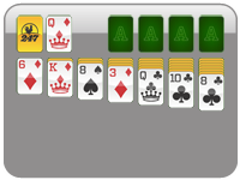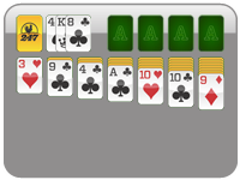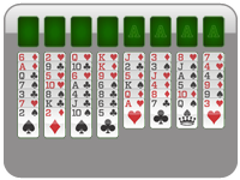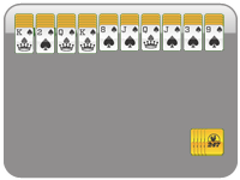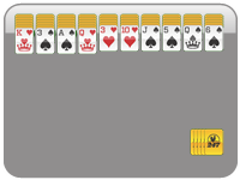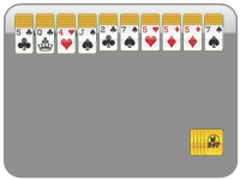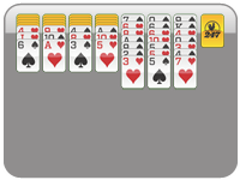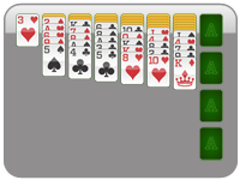2-Suit Spider Solitaire
Welcome to 247's 2-Suit Spider Solitaire! In this version of classic Spider Solitaire, you wield two different suits to complete eight sequences. Start playing and setting best times—we’ll keep track of them—or learn how to play in our guide below.
How to play 2-Suit Spider Solitaire
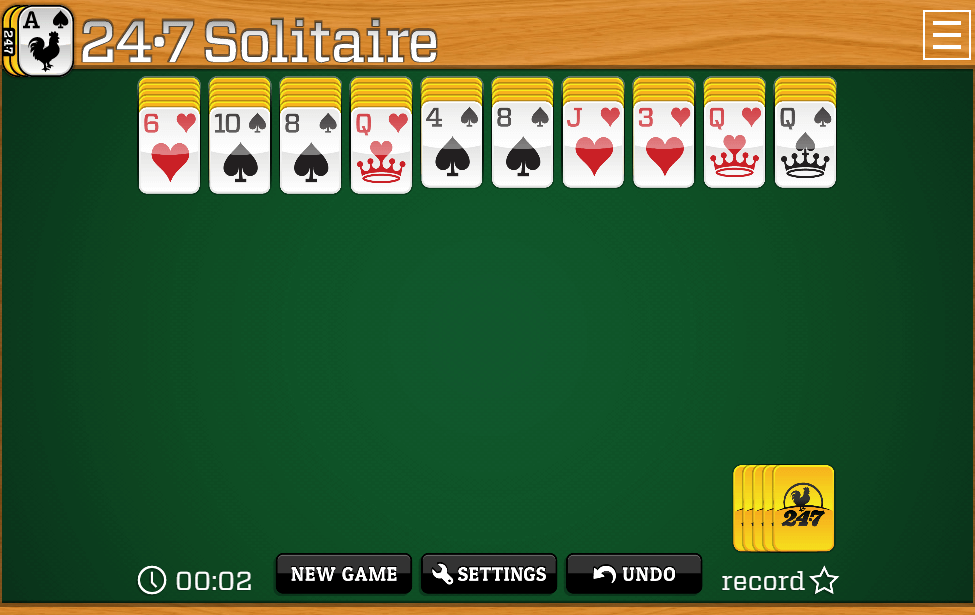
Just like Spider Solitaire, 2-Suit Spider Solitaire is a card game that uses two decks of cards to set up eight stacks (as shown). However, 2-Suit Spider Solitaire requires even more skill and concentration because there are two suits of cards involved—Spades and Hearts in the example. This is for Spider Solitaire lovers seeking to take their skills to the next level, and there’s a 4-Suit version for more challenge.
The playing area is called the tableau.
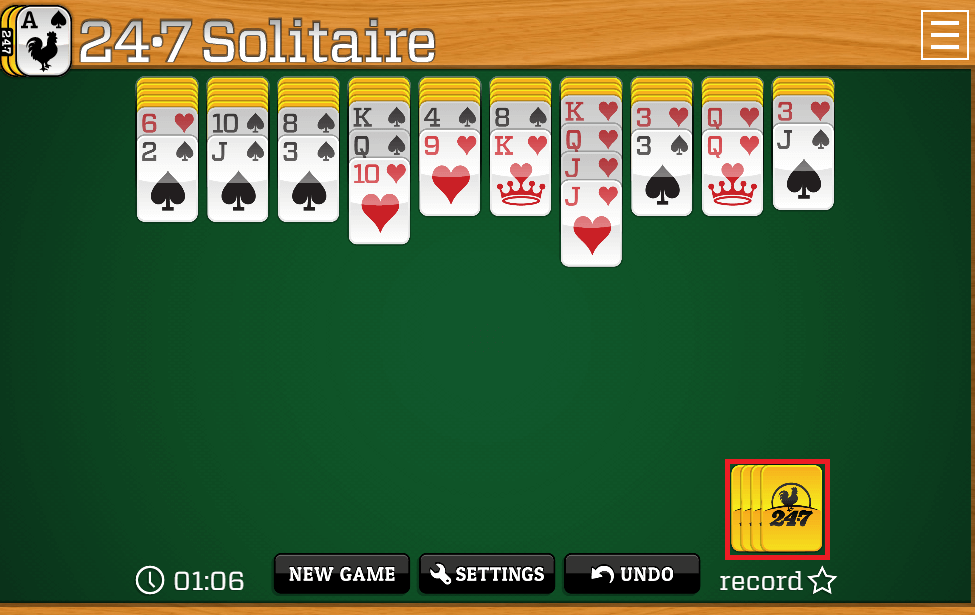
The point of the game is to create sequences of cards within the same suit in descending order from King to Ace. When you complete a sequence, it’s removed from the tableau. As you can see, we were able to move the red Queen and Jack underneath the red King. When a card is moved without a face-up card beneath, the unrevealed card is flipped up.
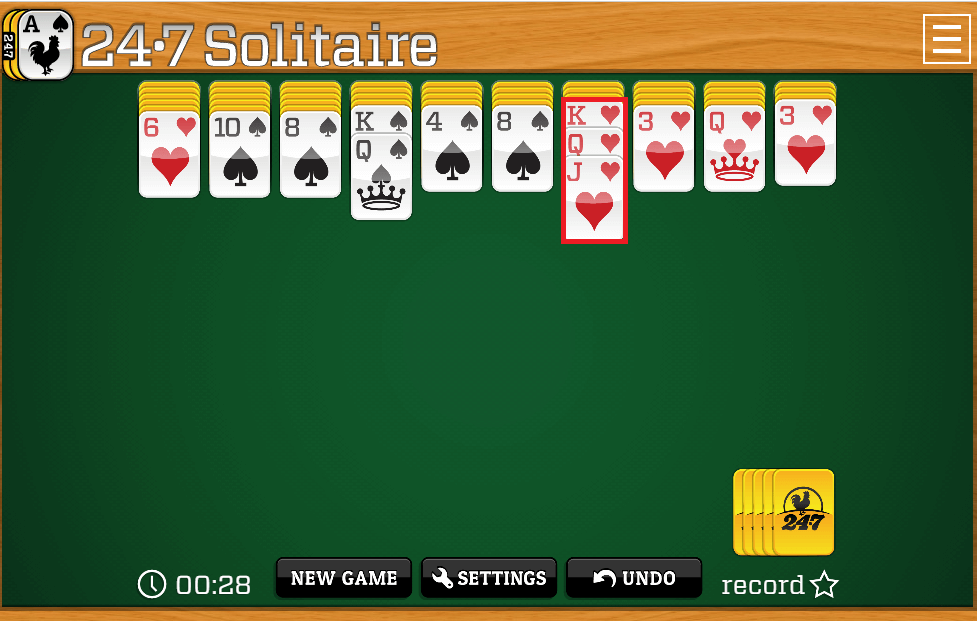
You can move a card from a different suit into the sequence, but that sequence will now be cut off until you move that card away—the cards underneath are grayed out to demonstrate this. This can be helpful to free up other stacks, but be careful not to bury a sequence behind non-suitable cards.
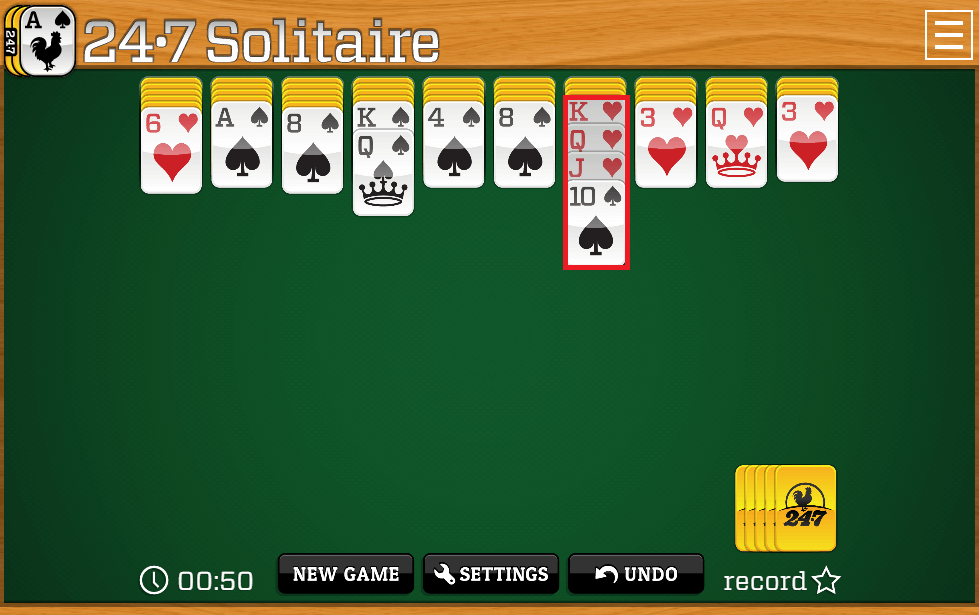
When you’ve run out of available moves, click the draw pile at the bottom right. This will put one card on top of each stack. All columns must have at least one card in it to draw from the stock.
Speaking of which, when you have an empty column, you can move a sequence to that space freely. This becomes a bit tricky the more sequences you complete, as there are fewer cards in play.
Once you’ve completed eight sequences (the # of legs on a spider), you win!
Solitaire Games
2-Suit Spider Solitaire Strategy
The objective of 2-Suit Spider Solitaire is to complete eight sequences, including 4 of each suit. So, how do you do that?
First, you must organize your cards properly. Once the game is dealt, take a look at the tableau and start figuring out where you’re going to create sequences. Any Kings should remain at the top and should be added to. This is tricky when you’re balancing two different suits, but you’ll get used to it as you play more games. You want to get sequences out of the way to free up space, so you must organize your cards with that goal in mind.
Second, you want to get unrevealed cards on the tableau flipped up ASAP. Obviously, having more cards in play provides more chances for sequences to be made. Also, though, it becomes harder to reveal these as the game progresses with more cards put on top. Freeing up columns to move larger sequences in is a good strategy.
Lastly, avoid having blocked sequences whenever possible. Sometimes, it’s a good idea to move an unlike suit on top of a sequence to free up a column; however, this shouldn’t be done often. Also, you shouldn’t draw from the stock until absolutely necessary, or you risk blocking almost every sequence you’ve been building.
Learning these strategies will help you improve your game, but only practice can make perfect!
2-Suit Spider Solitaire FAQs
What are the differences between Solitaire and Spider Solitaire?
Solitaire and Spider Solitaire have many differences. Solitaire normally uses one 52-card deck, but Spider Solitaire always uses two decks (104 cards). Solitaire involves building foundations from Ace to King, but Spider Solitaire involves building sequences from King to Ace. Also, Solitaire uses all four suits, whereas Spider Solitaire may use one, two, or four suits depending on your choice.
Is 2-Suit Spider Solitaire hard?
All Solitaire games have a degree of difficulty based on the skill and knowledge of the mechanics needed to complete a hand. When compared to 1-Suit Spider Solitaire, yes, it is more difficult. This is because rather than only needing to create sequences, you need to make sure sequences are the right suit. It follows that 4-Suit Spider Solitaire is harder than 2-Suit, then.
Where did Spider Solitaire come from?
Solitaire has a storied history, and Spider Solitaire is just one point on that timeline. Spider Solitaire was conceived around 1949, named as such because of the eight stacks you begin with. It rose to prominence when it was included on Windows computers to teach users how to use the newfangled “mouse.” Ever since, it has been one of the most popular digital card games of all time.
Is every game of 2-Suit Spider Solitaire winnable?
Unfortunately, no Solitaire games are 100% winnable due to the nature of the games. Sometimes, you’ll get an awful draw that leaves you completely stuck. Other times, what seemed like a good play in the beginning gets you cornered into a loss. Luckily, it’s easy to start again with a new hand, so don’t be frustrated!
Is Spider Solitaire good for your brain?
Yes! Spider Solitaire requires organization skills, memory, and other cognitive abilities that, when practiced, can improve brain health and functionality. Studies have shown that card games are great ways to keep your brain happy and healthy.
More Solitaire Games
More Games
Solitaire News
Disclaimer
DISCLAIMER: The games on this website are using PLAY (fake) money. No payouts will be awarded, there are no "winnings", as all games represented by 247 Games LLC are free to play. Play strictly for fun.


